Það sem við lærðum afinflúensufaraldrinum 1918.
https://medium.com/@tomaspueyo/coronavirus-act-today-or-people-will-die-f4d3d9cd99ca
Learnings from the 1918 Flu Pandemic
klikka mynd stærri
1*
Philadelphia var sein til aðgerða og margir dóu.
Berðu það saman við St. Louis með viðbúnað strax.
Denver greip til varna, en hætti svo við.
Denver fékk annan topp stærri en þann fyrri
You can see how Philadelphia didn’t act quickly, and had a massive peak in death rates.
Compare that with St Louis, which did.
Then look at Denver, which enacted measures and then loosened them.
They had a double peak, with the 2nd one higher than the first.
Það orsakaði fleiri dauðsföll í Denver í inflúensufaraldri 1918.
klikka mynd stærri
2
*We noted that, in some cases, outcomes appear to have correlated with the quality and timing of the public health response. The contrast of mortality outcomes between Philadelphia and St. Louis is particularly striking (Fig. 1). The first cases of disease among civilians in Philadelphia were reported on September 17, 1918, but authorities downplayed their significance and allowed large public gatherings, notably a city-wide parade on September 28, 1918, to continue. School closures, bans on public gatherings, and other social distancing interventions were not implemented until October 3, when disease spread had already begun to overwhelm local medical and public health resources. In contrast, the first cases of disease among civilians in St. Louis were reported on October 5, and authorities moved rapidly to introduce a broad series of measures designed to promote social distancing, implementing these on October 7. The difference in response times between the two cities (≈14 days, when measured from the first reported cases) represents approximately three to five doubling times for an influenza epidemic. The costs of this delay appear to have been significant; by the time Philadelphia responded, it faced an epidemic considerably larger than the epidemic St. Louis faced. Philadelphia ultimately experienced a peak weekly excess pneumonia and influenza (P&I) death rate of 257/100,000 and a cumulative excess P&I death rate (CEPID) during the period September 8–December 28, 1918 (the study period) of 719/100,000. St. Louis, on the other hand, experienced a peak P&I death rate, while NPIs were in place, of 31/100,000 and had a CEPID during the study period of 347/100,000. Consistent with the predictions of modeling, the effect of the NPIs in St. Louis appear to have had a less-pronounced effect on CEPID than on peak death rates, and death rates were observed to climb after the NPIs were lifted in mid-November (7–9).
Egilsstaðir, 20.03.2020 Jónas Gunnlaugsson


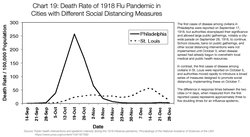
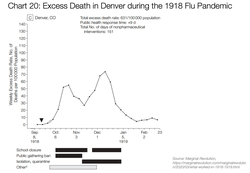
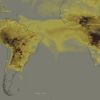
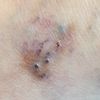
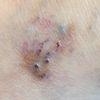
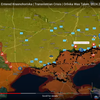

Bæta við athugasemd [Innskráning]
Ekki er lengur hægt að skrifa athugasemdir við færsluna, þar sem tímamörk á athugasemdir eru liðin.